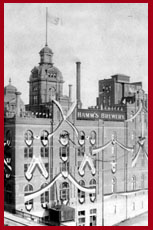

It’s Oscar time for baseball. Soon, overly muscular men will strut their stuff on the red carpet of the media (or at least sports journalists and the players’ PR reps will) to prove why each one is or is not deserving of the Cy Young, MVP, Rookie of the Year, and Manager of the Year awards. These awards seem as meaningful to me as a juicy filet mignon sitting on my plate -- not very. I can never remember who won the previous year’s awards, nor do I care to.
But I am intrigued by the debate stirred up this year (and in past years too, I’m sure) about the relative merit of giving the MVP award to a DH rather than to a player who participates on both offense and defense. Fans and journalists are pledging their allegiance either to
Alex Rodriguez or
David Ortiz for the AL MVP; most for Rodriguez are citing Big Papi's less than frequent stints on defense. Despite my Red Sox love, I don't really care who wins. But if pinned down to choose, of course I'd say Ortiz. The argument (thank you Scott Miller) kinda goes
like this:
Normally, I subtract points for a designated hitter. I know the argument -- hey, it's in the rules that a guy can use the stick but not his glove -- but a DH still is not a complete player. However, Ortiz has been so money for the Red Sox over the past two seasons -- and particularly this year -- that I believe his summer has been special enough to warrant the award. Of his 47 home runs, 20 have either tied the game or put the Red Sox ahead. As Ortiz himself might say, that's a lot of clutch homers, bro.
Beyond what this discussion means for the MVP debate (cause I don't care, remember?), I'm more interested in the potential implications for Hall of Fame inductions, which I do care about. In 2003, when
the debate was raging about Edgar Martinez, I remember staunchly refusing him a ticket to Cooperstown by arguing that as a DH he didn't belong. Now I realize that what I meant to argue was that EdMar shouldn't be in the Hall because of his lack of stellar accomplishments, not because of his position.
If Ted Williams had been a DH and hit in the same way, I would have wanted him to be inducted. Same with Pete Rose. (Oh, right.) Just cause you're a DH doesn't mean you can't be the most valuable player or Hall of Fame caliber. It just means you have to be pretty damn awesome to overcome the fact that you're sitting on the bench for more than half the game. I think Ortiz has it in him to do just that.
[Oh, and since I mentioned it, I may as well officially say on record that Pete Rose has my backing to be in the Hall of Fame. Anything he did while a manager isn't any more greedy or harmful to baseball than any number of moves made by players, coaches, and managers nearly every day. He just got caught. It shouldn't affect his status as one of the greatest players of all time. (In 1999 Sporting News selected him as
the 25th Greatest Baseball Player, ahead of Sandy Koufax, Tris Speaker, Rod Carew, Mel Ott, and Yogi Berra, among others.) Hell, they let violent assholes into the Hall, so why not a gambler?]




